Contemporary art is art that is made today, artists of the twenty first century. This kind of art allows artists to reflect on the world we live in today and the issues relevant in our lives and around the world. The five contemporary women artists I have chosen are Yayoi Kusama, Helen Frankenthaler, Yoko Ono, Kara Walker and Marina Abramović. All five of these women have different styes of showing their artistic talents and they are able to express themselves in each of the pieces they do.
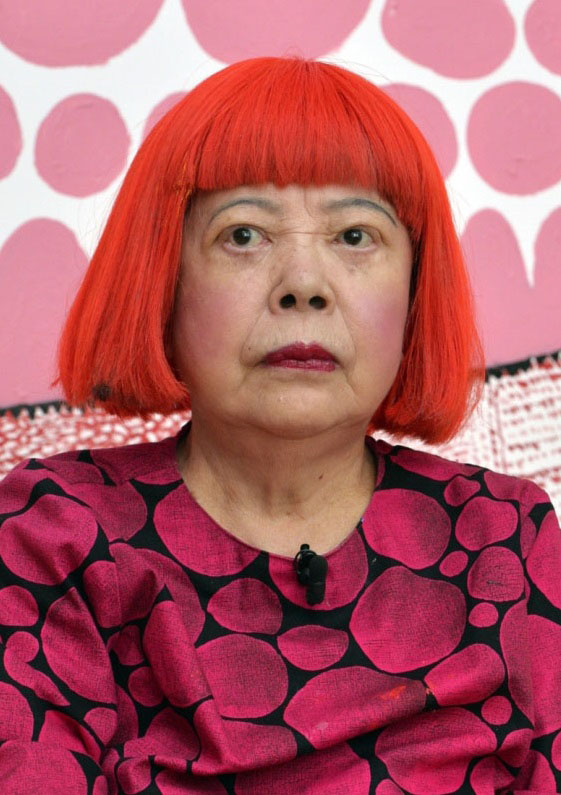 |
Yayoi Kusama
|
 |
| Yayoi Kusama, Infinity Nets, 2013 |
Yayoi Kusama is a Japanese artist who employed painting, sculpture, performance art, and installations in her work. She is known for her extensive use of polka dots and infinity installations. She began painting as a young child and at the time, she experiences hallucinations that involved dots. Those hallucinations and the theme of dots would continue to influence her art throughout her career. Once she moved to New York City, her early work was called infinity net paintings. These paintings consisted of thousands of tiny marks repeated on a large canvas. These works disregarded the edges of the canvas to make it seem as if it would continue for forever. According to Rachel Cole, "such works explored the physical and psychological boundaries of paintings, with the seemingly endless repetition of the marks creating an almost hypnotic sensation for both the viewer and the artist." Her work transitioned to Pop art and performance art, the theme of sexual anxiety was related to much of her work. An example of her work is the Infinity Mirror Room- Phalli's Field, an installation of mirrors that covered the whole room and where hundreds of stuffed phalli with red polka dots. Her work was shown in Los Angeles County Museum of Art, the MOMA
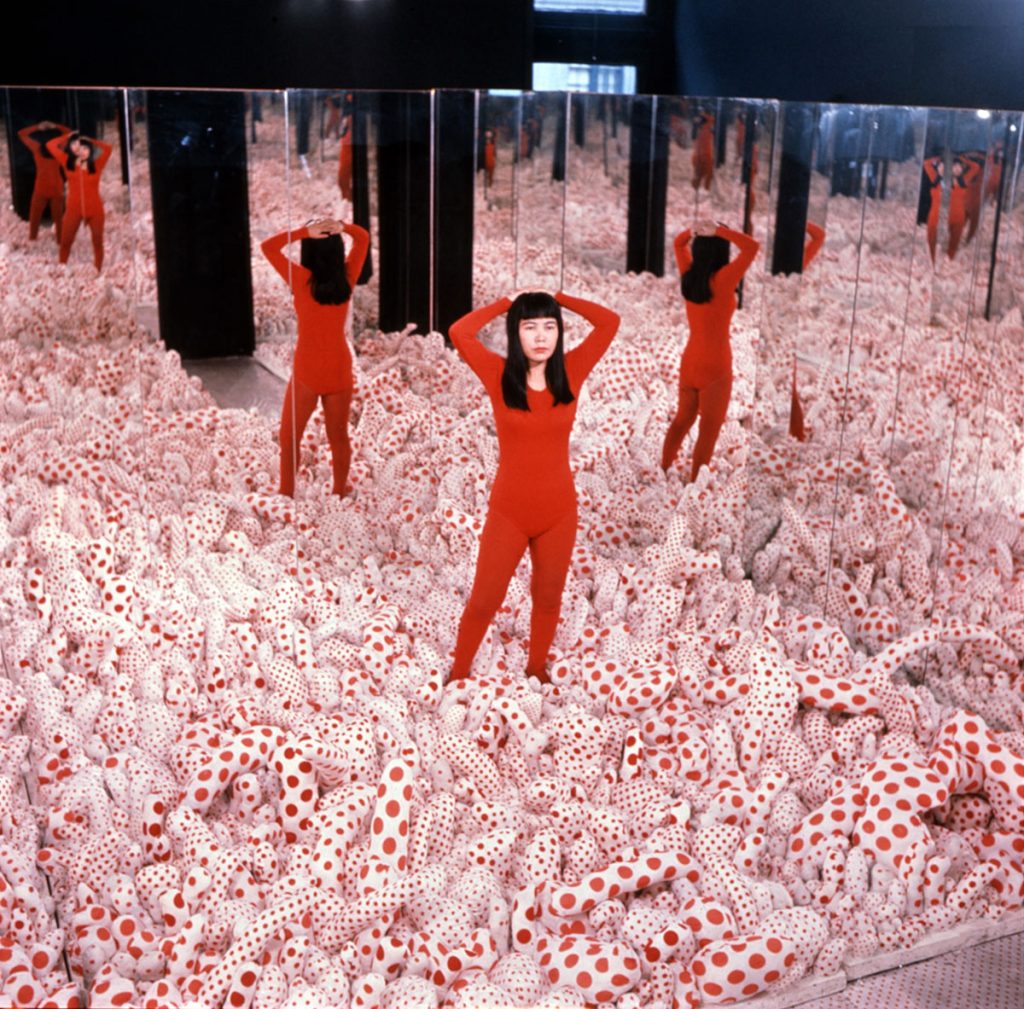 |
| Yayoi Kusama, Phalli's Field, 1965 |
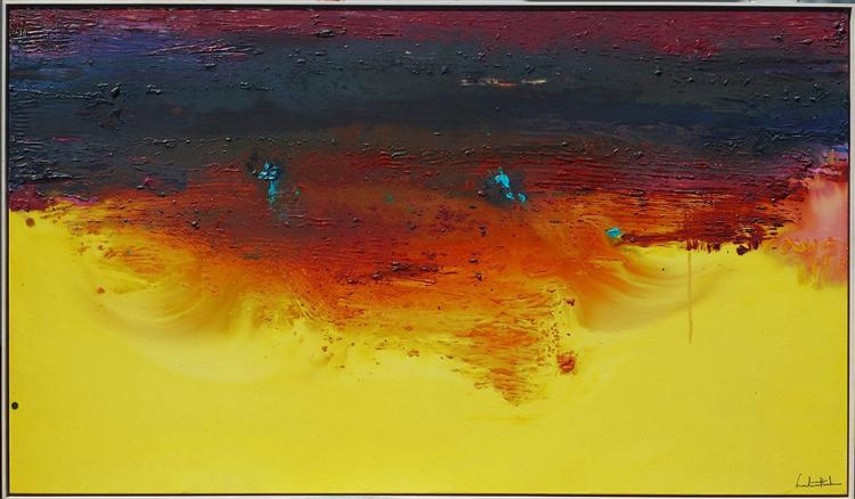 |
| Helen Frankenthaler, Adirondacks, 1992 |
Helen Frankenthaler is an American painter who's movements and styles are abstract expressionism and color field painting. She was one of the most influential artists of the mid twentieth century. Frankenthaler was influenced by abstract expressionist practices but she developed her own style of this approach. She is known for the creation of the soak stain technique where she would pour turpentine paint on a canvas that would produce a glowing color wash that seemed to deny three dimensional illusions. Her color field paintings gave her more attention and art critic Clement Greenberg said she was the next big thing. Color field painting showed the joys of pure color and have paintings a new kind of look and feel on the canvas.
Yoko Ono is a multimedia artist and became known in the 1960s when she married John Lennon. Her work was considered too radical by many people so people did not receive her art work well. Her art word was made so that her audience had to participate and they were forced to get involved. One of her most famous pieces is called cut piece. It happened in 1964 where members of the audience would come up one by one and cut off a piece of her clothing until she was naked. Ono also sang, she became the oldest artist to have a number one hit on the dance charts in 2011. She was the age of 78 when her hit "Move on Fast" was on the top charts. Her art work was in New York's, Museum of Modern Art in 2015, it featured over one hundred works by Ono. Another one of Ono's major artworks is Play It By Trust aka White Chess Set. At this time, it was during the 1960s when her artwork was geared towards minimalism. This piece is described as the all white chessboard. The audience was to play the game as long as they could remember which pieces were yours and which were the opponents. She wanted her players to see past the black and white, she explained that people need to learn to share an experience and how to communicate.
Kara Walker is an African American artist who got famous from her large paper silhouettes. She uses these silhouettes to analyze gender, race and black history. Her father was a painter and at the age of three, she wanted to become an artist. She created pieces in order to tell a story. In 1999 Walker said, "I guess there was a little bit of a slight rebellion, maybe a little bit of a renegade desire that made me realize at some point in my adolescence that I really liked pictures that told stories of things genre paintings, historical paintings the sort of derivatives we get in contemporary society." Her family moved to Georgia when she was thirteen and that's when she focused on the issue of race. Walker did not want her art to just be pleasing to the eyes, she used silhouettes to show people that although it does show much information, it says a lot about race. In 1994, the Drawing Center in New York featured a piece called Gone, an Historical Romance of a Civil War as It Occurred Between the Dusky Thighs of One Negress and Her Heart. It depicted disturbing scenes of the American South. In 2006, the Metropolitan Museum of art in New York City featured After the Deluge. This piece was inspired by Hurricane Katrina in New Orleans. It showered black figures showing power of water.
Marina Abramovic is a performance artist that test the endurance and limitations of her body and mind. She started off studying painting but later she became interested in the ability to use her body as an exploration. Her pieces provoked controversy and nudity became a regular part of her work. In 1975 she collaborated with Frank Uwe Laysiepen. Their work was centered on gender identity and their most famous piece is Imponderabilia. They both stood naked facing each other in front of a museum's entrance. The entrance was very narrow and those trying to enter had to squeeze between the two, making people choose a side to face. She continues to stage performances where her audience must be involved in. For example, her MoMA retrospective, The Artist is Present, where people from the museum could sit in a chair across from Abramovic and engage in a silent exchange with her. During this exhibition, many people sat in front of her and even though it was silent, people would feel very emotional and cry.
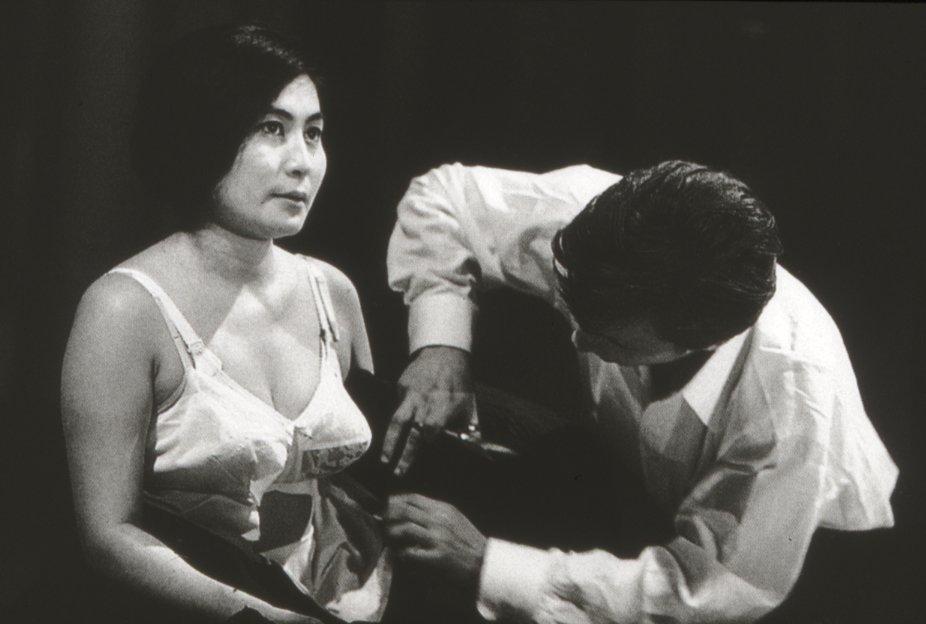 |
| Yoko Ono, Cut Piece, 1966 |
 |
| Yoko Ono, All White Chess Set, 1966 |
 |
| Kara Walker, Gone, 1994 |
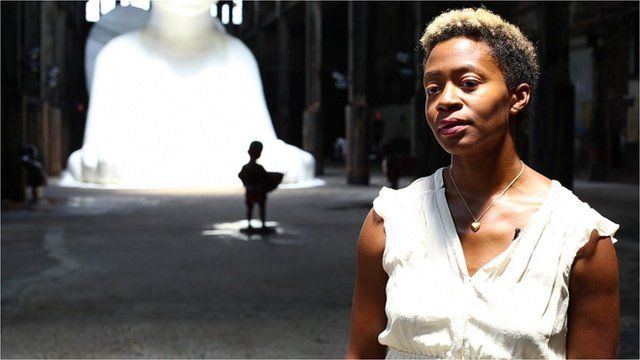 |
| Kara Walker |
 |
| Marina Abramovic, The Artist is Present, 2010 |
 |
| Marina Abramovic, Imponderabilia, 1977 |
https://www.britannica.com/biography/Yayoi-Kusama
http://www.theartstory.org/artist-frankenthaler-helen.htm
http://www.theartstory.org/artist-frankenthaler-helen.htm
http://www.theartstory.org/artist-ono-yoko-artworks.htm
https://www.britannica.com/biography/Kara-Walker
https://www.britannica.com/biography/Marina-Abramovic
https://www.britannica.com/biography/Marina-Abramovic
No comments:
Post a Comment
Note: Only a member of this blog may post a comment.